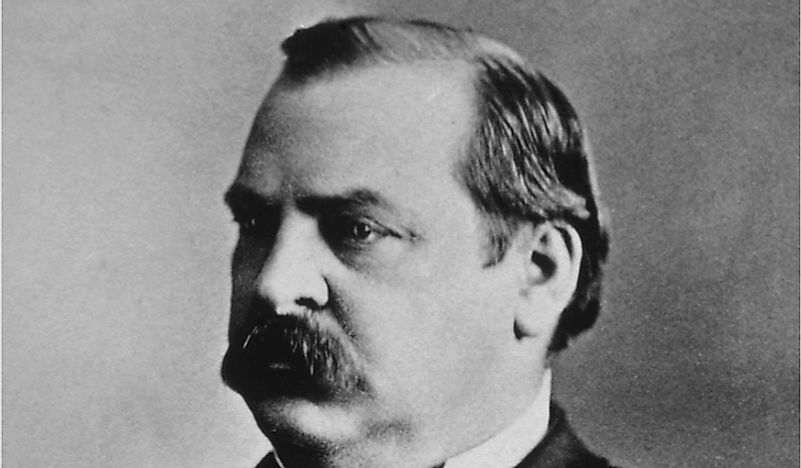Grover Cleveland: 22nd President

Former President Grover Cleveland was born on March 18, 1837 in New Jersey. His father died when Grover was still in school, so he dropped out to find work and help support his family, mother and eight other siblings. Due to this responsibility, he was unable to pay for university, and he ended up teaching for a brief period while before working as a law clerk. After some time as a law clerk, he had learned enough to take and pass the bar exam. Three years later, in 1862, he opened a law firm.
Political Career
In 1871, Cleveland held his first public office as sheriff for a two-year term but returned to his law offices as soon as it ended. In 1881, he campaigned for the office of Buffalo Mayor, won, and took office in 1882. He was an extremely popular mayor and encouraged to run for governor. He became governor of New York in January of 1883. His stance on reducing government spending created both political enemies and political allies, the most important of these being then-President Theodore Roosevelt. His popularity grew, and he decided to run for president.
Presidency
Grover Cleveland became the 22nd President of the US on March 4, 1885. He was the first Democrat elected after the Civil War and the first to have his marriage ceremony at the White House. During his term, he vetoed more bills than any other president before him. These vetoes included: providing seed to farmers suffering from drought, fraudulent private pensions for alleged Civil War veterans, and pensions for disabilities not caused by military service. He forced railroad companies to return large tracts of land that had previously been granted to them by the government and signed the Interstate Commerce Act in an attempt to federally regulate railroads. Cleveland did everything in his power to reduce government spending.
His move to reduce protective tariffs resulted in low approval ratings. In 1888, he was defeated by Benjamin Harris in his second presidential campaign. Not to be discouraged, he waited another four years and ran again. Grover Cleveland became the 24th President of the US on March 4, 1893, and is the only president to have two non-consecutive terms. The beginning of the new term was marked by an economic crisis when railroad companies went bankrupt followed by banks, a stock market crash, a credit crisis, high unemployment, and coal mining strikes. The gold rush of 1896 pulled the economy out of destitution. Though he was a dedicated president and firm in his beliefs, the policies of his second term lost the support of his party.
Legacy
Though Cleveland is not considered one of the greatest presidents to serve the nation, he has achieved other honors. His summer retreat farmland has since been developed into a suburban residential area known as Cleveland Park where he and his family are portrayed on murals in the neighborhood. Grover served on the first board of directors of Buffalo Normal School, which today is the Buffalo State College. Administrative sections of this institution are hosted at the Grover Cleveland Hall, named in his honor. He and his family were heavily involved with Princeton University and even purchased a retirement home nearby, during his retirement, Cleveland served as a trustee for the University. Grover Cleveland will be most remembered for his resolute commitment to refusing special privileges for individuals and economic groups.
Grover Cleveland, 22nd And 24th U.S. President
| Party Affiliation | Democrat |
|---|---|
| Birthplace | Caldwell, New Jersey |
| Date of Birth | March 18th, 1837 |
| Date of Death | June 24th, 1908 |
| First Term | March 4th, 1885-March 4th, 1889 |
| Second Term | March 4th, 1893-March 4th, 1897 |
| Vice Presidents | Thomas Hendricks; Adlai Stevenson |
| Major Conflicts Involved In | Hawaiian Change of Powers and Annexation; Tensions with Spain |
| Preceded by | Chester A. Arthur; Benjamin Harrison |
| Succeeded by | Benjamin Harrison; William McKinley |
| First Lady | Frances Folsom Cleveland Preston |











